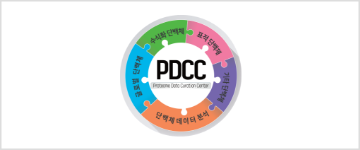2025 Fall
International Convention of PSK
2025 CONVENTION
Abstracts
Anti-oxidant and anti-inflammatory effects of ethanol extract from Morus alba
- Tae Won Kim1, Hye Kyung Kim*1
Inflammatory responses are now widely accepted to contribute to a number of disorders in humans which are highly prevalent globally. With evidence now suggests that reactive oxygen species (ROS) might play an even more significant role in regulating a series of intracellular signaling pathways to stimulate inflammatory responses. Then, it may be a good choice to search for antioxidant nutrients from old-line plants to investigate anti-inflammatory plants. Morus alba (M.alba) was thought to possess a powerful antioxidant system as defense against ROS induced oxidative stress. This study was designed to evaluate the anti-inflammatory effect and its mechanism with ethanol extract of M.alba extract (MAE). The antioxidant effect of MAE was evaluated by ROS and ONOO- scavenging assay. To examine the anti-inflammatory effect of MAE, Reverse transcription PCR (RT-PCR) was performed in the expression of pro-inflammatory cytokine gene. The contents of C3R and C3G, the major compounds in Morus alba, in MAE were determined by HPLC. ROS and ONOO- scavenging assays showed that MAE reduced ROS and ONOO- in dose dependent manner. MAE reduced the secretion of in interleukin 1 beta (IL-1β), interleukin 6 (IL-6), and tumor necrosis factor α (TNF-α) which induced by lipopolysaccharide (LPS). This result suggests that MAE participates in the regulation of pro-inflammatory cytokine secretion in RAW 264.7 cells. HPLC analysis confirmed the peaks of C3R and C3G without being interference. Quantitative results demonstrated that MAE contained 1.51 mg/g of C3R and 0.47 mg/g of C3G. Our study demonstrates that MAE exhibits potent antioxidant and anti-inflammatory effects by scavenging ROS and suppressing the secretion of pro-inflammatory cytokines.
Q&A
- There are no registered questions









































